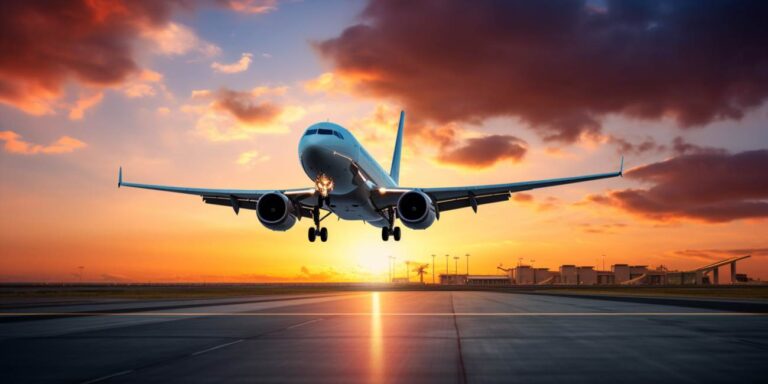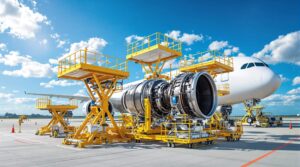One key advantage of opting for lease agreements is the financial flexibility they provide. Instead of committing to the hefty upfront costs associated with purchasing an aircraft, airlines can allocate their capital more efficiently. This financial flexibility is particularly crucial in an industry where margins can be razor-thin, and any opportunity to optimize cost structures is invaluable.
Aircraft leasing also shields airlines from the rapid depreciation that owned assets often undergo. The aviation landscape witnesses technological advancements at an accelerated pace, rendering aircraft obsolete sooner than later. By engaging in leasing arrangements, airlines can regularly upgrade their fleets, staying at the forefront of technological innovation without the burden of dealing with outdated and depreciated assets.
Furthermore, leasing offers airlines a level of operational flexibility that is hard to achieve through buying. Lease agreements typically come with options for short-term or long-term durations, allowing airlines to tailor their fleet to match varying demand cycles. This adaptability proves instrumental in navigating seasonal fluctuations or responding swiftly to changes in market conditions.
In the realm of risk management, leasing also stands out. With the residual value risks shouldered by the lessor, airlines are insulated from the uncertainties surrounding the future value of the aircraft. This risk transfer mechanism allows airlines to focus on their core operations without being burdened by the complexities of asset valuation and depreciation.
Not to be overlooked is the impact of leasing on balance sheets. Unlike purchasing, leasing an aircraft often results in off-balance-sheet financing. This can enhance a company’s financial ratios and improve its creditworthiness, making it an attractive prospect for investors and lenders.
While the decision to lease or buy ultimately depends on various factors, including the specific needs and financial standing of the airline, the prevailing trend towards leasing aircraft is a testament to the numerous advantages it brings. In a volatile industry where adaptability and financial prudence are paramount, leasing emerges as a strategic maneuver, propelling airlines towards sustained growth and resilience.
The pros of aircraft leasing for airlines flexibility cost saving
Aircraft leasing offers airlines a myriad of advantages, with flexibility and cost-saving being at the forefront of these benefits. In the dynamic aviation industry, the ability to adapt quickly to market changes is crucial, and leasing provides the ideal solution.
One of the primary advantages of aircraft leasing is the flexibility it affords to airlines. Instead of committing to long-term ownership, airlines can opt for operational leases, allowing them to use the aircraft for a predetermined period without the burden of ownership responsibilities. This flexibility is invaluable in a market where demand fluctuations and route adjustments are commonplace.
Cost-saving is another compelling reason for airlines to embrace leasing. Acquiring a new aircraft involves significant upfront costs, from the purchase price to maintenance expenses. Leasing, on the other hand, allows airlines to allocate their financial resources more efficiently. By avoiding the hefty initial investment, airlines can redirect funds towards enhancing customer experience, expanding routes, or investing in advanced technologies.
The financial flexibility gained through leasing is further accentuated by the ability to negotiate favorable terms. Airlines can explore various leasing options, such as wet leases that include crew, maintenance, and insurance. This eliminates the need for airlines to manage these aspects, reducing operational complexities and costs.
Leasing also provides an avenue for airlines to update their fleets with the latest and most fuel-efficient aircraft without the financial strain of purchasing new planes. This is crucial in an era where fuel efficiency is not only environmentally responsible but also a key factor in cost reduction. With leasing, airlines can maintain a modern and competitive fleet, meeting stringent environmental standards and enhancing their overall operational efficiency.
The global nature of the aviation industry makes leasing an attractive option for international expansion. Airlines can lease aircraft for specific routes or seasonal demands, avoiding the need for permanent fleet additions. This strategic approach enables airlines to tap into new markets without committing to long-term investments, mitigating risks associated with uncertain demand.
Moreover, leasing provides resilience in the face of economic uncertainties. During economic downturns or unforeseen crises, airlines can quickly adjust their fleet size by returning leased aircraft, avoiding the financial strain of maintaining excess capacity. This adaptability is a crucial survival mechanism in an industry where external factors can significantly impact demand.
The cons of leasing instead of buying operational restrictions
Leasing, while often seen as an attractive alternative to buying, comes with its fair share of drawbacks that can impact businesses in various ways. One significant concern is ownership control. Unlike purchasing, where you have complete control over the asset, leasing puts you at the mercy of the lessor’s terms and conditions. This lack of ownership control can restrict your ability to make crucial decisions regarding the asset.
Operational restrictions are another thorn in the leasing experience. When you lease, you are bound by certain rules and regulations set by the lessor. These operational restrictions can range from limitations on usage to mandatory maintenance schedules. Such constraints might hinder your business operations and flexibility, making it challenging to adapt to changing needs.
Asset utilization is a critical factor for businesses striving for efficiency. Unfortunately, leasing might not be the best route if optimal asset utilization is your goal. Leased assets often come with usage limitations, and exceeding these limits can result in hefty penalties. This can be a significant hurdle for businesses with fluctuating demands and dynamic operational requirements.
One aspect that can sway decisions is the residual value of the asset. In leasing, you don’t benefit from the potential appreciation of the asset over time. The residual value remains in the hands of the lessor, and you miss out on the opportunity to capitalize on any value the asset might accrue. This lack of potential financial gain can be a considerable drawback for businesses looking to make strategic long-term investments.
Should airlines buy or lease airplanes ownership versus flexibility
When considering the decision to buy or lease airplanes, airlines grapple with a delicate balance between ownership and flexibility. The aviation industry, dynamic and susceptible to rapid changes, demands a nuanced approach to financial liability, operating costs, and fleet planning.
The allure of ownership lies in the sense of control it affords. Airlines that buy their planes embrace the permanence and potential long-term cost savings. It’s a strategic move that allows for tailoring aircraft to specific needs, incorporating custom features that suit the airline’s unique requirements. However, this path demands a significant upfront investment, and the airline assumes the full financial liability of the aircraft. In essence, ownership equates to a long-term commitment, tethering the airline to a particular model for an extended period.
On the flip side, opting to lease airplanes unveils a realm of flexibility that ownership struggles to match. Leasing provides the freedom to adapt to market fluctuations, technology advancements, and changing passenger preferences. Airlines can upgrade their fleets without the burden of selling or decommissioning old aircraft. This flexibility, however, comes at a cost. While leasing reduces the initial financial liability, it translates into consistent, albeit predictable, operating costs over the lease period.
Examining the spectrum of financial liability, owning planes grants airlines equity, but it also means shouldering the responsibility for maintenance, repairs, and potential depreciation. Leasing, on the other hand, shifts some of the financial liability to the lessor, lightening the immediate burden on the airline’s balance sheet. However, this arrangement often involves stringent maintenance standards and can incur penalties if not adhered to.
When it comes to operating costs, ownership can yield lower expenses over the long term, especially if the aircraft maintains its value. However, it requires meticulous fleet planning to ensure the acquired planes align with the airline’s growth trajectory and market demands. Leasing, while offering a more predictable cash flow, demands strategic fleet planning to avoid being locked into leases that may become financially burdensome if market conditions shift.
The decision to buy or lease airplanes transcends a simple financial calculus. It involves a careful evaluation of the airline’s immediate needs, long-term goals, and risk appetite. Striking the right balance between ownership and flexibility requires a keen understanding of the intricacies of financial liability, operating costs, and fleet planning.






